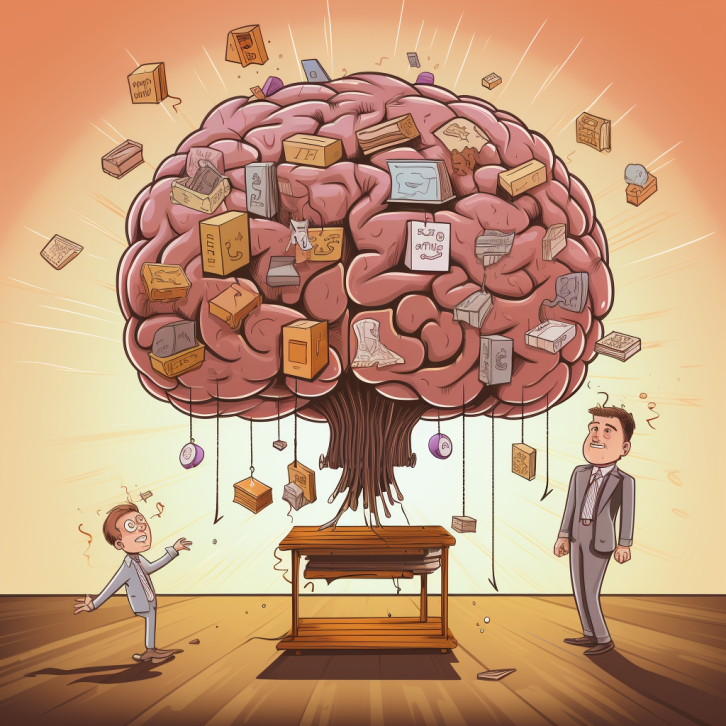A new study published in PLOS One investigated whether adaptive dual n-back working memory training could enhance cognition in healthy adults aged 30-60.
The randomized controlled trial found that 5 weeks of daily home-based dual n-back training did not improve working memory, processing speed, or fluid intelligence compared to an active control training program.
Key Facts:
- 57 healthy adults aged 30-60 were randomized to complete 25 sessions of either dual n-back training or an active control training program.
- Dual n-back training involves responding to simultaneous visual and auditory stimuli while constantly updating working memory load.
- The active control program consisted of adaptive visual processing speed games.
- Participants completed pre and post-training assessments of working memory, processing speed, and fluid intelligence.
- Multivariate analysis found no differential improvements between the training groups over time on the cognitive outcomes.
- Bayesian analyses provided further evidence supporting the null hypothesis of no training related benefits.
- Results suggest dual n-back training may not enhance cognition beyond practice effects in middle-aged adults.
Source: PLOS One
The Allure of ‘Brain Training’ to Boost Cognition
In recent years, computerized ‘brain training’ programs have exploded in popularity.
Games and apps promising to enhance cognition are attractive to diverse populations hoping to boost intellectual performance.
Healthy middle-aged adults are a key target market.
As this group ages, interest grows in maintaining youthful mental abilities and forestalling age-related decline.
Dual n-back training has received particular attention for its potential to improve working memory and reasoning abilities.
This complex task involves responding when current visual and auditory stimuli match those presented a certain number of trials back.
The load constantly updates, placing high demands on attention, working memory, and cognitive flexibility.
But does practicing these skills translate into real world benefits?
The new study adds to mounting questions around the transfer effects of brain training.
Despite commercial hype, scientific support for generalizable benefits remains mixed.
Understanding what works, and for whom, requires rigorous research into specific programs and populations.
Targeting Working Memory in Middle Age
Declines in reasoning and problem solving can start in the 30s and 40s.
At the same time, middle age is a peak period for complex cognitive skills like working memory.
This combination makes healthy adults aged 30-60 an important group for studying cognitive training effects.
Working memory acts as a mental workspace for interpreting information and guiding behavior.
It involves temporarily storing relevant details, manipulating them, and quickly refreshing the contents.
This ability strongly predicts higher-order thinking and daily functioning.
Given its central role in cognition, working memory seems a sensible training target.
The hope is practicing demanding memory tasks will expand mental capacity.
In theory, improved working memory confers benefits to fluid intelligence, the ability to tackle new problems by thinking flexibly.
Dual n-back training aims to boost both working memory and fluid intelligence.
Participants monitor streams of visual and auditory stimuli, responding when the current pair matches the pair a certain number of positions back.
Adaptive algorithms increase difficulty as performance improves to keep pushing cognitive limits.
Studies show young adults practicing dual n-back improve on the task itself.
But whether benefits generalize remains debated. Less is known about effects in middle-aged populations.
Clarifying if and for whom working memory training works is crucial for guiding public interest.
Do the Effects of Dual N-Back Training “Transfer” to Other Tasks?

The new study tested if 5 weeks of home-based dual n-back training improved cognition compared to an active control program.
The key question was whether there were transfer effects beyond simply practicing the training tasks.
Researchers recruited 81 healthy Canadian adults aged 30-60 through online advertising.
Of these, 57 completed pre and post-training assessments and at least 13 training sessions.
The 27 participants randomized to dual n-back completed an average of 23 adaptive training sessions.
This group was compared to 30 controls who practiced visual processing speed tasks.
These simpler games targeted attention and reaction time rather than continuous storage and updating of information.
This active control condition helped account for expectancy effects and engagement in computerized training.
Participants completed tests of working memory (Digit Span and Operation Span), processing speed (Coding and Symbol Search), and fluid intelligence (Raven’s Matrices and Cattell’s Culture Fair) at baseline and post-training.
Multivariate analysis found no significant group x time interactions.
Dual n-back training did not differentially improve the cognitive outcomes compared to active controls.
Bayesian analyses supported the null hypothesis, suggesting data were 4 to 40 times more likely under a model assuming no effect of training condition.
Results are Consistent With Prior Research
While some studies report cognitive benefits from dual n-back training, null results are common when compared to active controls.
The current findings fit with prior research finding no broad transfer to reasoning or working memory.
Small samples, questionable control conditions, and ambiguous testing measures may contribute to mixed results in the field.
This study improved on past designs but also had limitations, including a small sample for detecting smaller effects.
Still, these null results are in line with meta-analyses and re-interpretations of the dual n-back literature.
Transfer effects are elusive, especially vis-à-vis appropriate control conditions.
Apparent benefits often reflect declining performance in passive control groups.
This highlights the need to compare training programs to active controls that account for engagement and placebo effects.
It also emphasizes interpreting results through a Bayesian lens, quantifying evidence for null effects over reliance on p-values alone.
Optimizing Brain Training Conditions and Measures
Additional research should explore modifications to training and assessment protocols that may reveal effects.
Study design factors like motivation incentives, interacting measures of difficulty, fatigue, and frustration during training, and selecting test measures that better match training processes could be illuminating.
Using multiple tests for each cognitive domain, as done here, improves construct validity. But their suitability needs scrutiny.
For instance, Operation Span may diverge from processes emphasized during n-back training.
Developing purer measures that better isolate trained abilities will be important.
Training conditions could also be refined to amplify motivation and individualization. Instantly increasing n-back load following good performance may frustrate some.
Exploring ways to optimize difficulty for persistent challenge and positive feedback may improve training gains.
Who Might Benefit from Working Memory Training?
Working memory training aims to push the boundaries of mental capacity and flexibility.
But clearly defining suitable populations is critical.
Enhancing cognition in developing children or cognitively impaired seniors may follow different patterns than healthy adults near their cognitive prime.
Other studies report working memory training may benefit children with ADHD and older adults experiencing mild cognitive impairment.
Populations with poorer baseline abilities and more room for improvement could show greater effects.
Clarifying individual factors that moderate training response will better target interventions.
In addition, multidomain programs combining training on attention, speed, memory, and reasoning may optimize results.
Isolating working memory in an otherwise cognitively intact sample may neglect the interconnected nature of cognition.
Taking a broader training approach could better mimic the enrichment of varied life experiences.
Working memory training holds intuitive appeal.
But scientifically demonstrating generalizable gains for healthy functioning adults remains elusive.
While some individuals may benefit, advantages are unlikely universal.
Managing Expectations: Memory Training
Widespread marketing advertising quick cognitive fixes warrants caution.
Working memory training should not be assumed a panacea for age-related decline in all middle-aged adults.
Healthy skepticism is warranted along with further research clarifying what works, for whom, and under what conditions.
Still, participating in novel cognitive activities can be inherently rewarding.
Motivations like enjoyment, challenge, and online social engagement should be considered alongside strictly measured cognitive benefits.
And while cognitive improvements may be limited, practicing new skills is unlikely harmful if expectations remain realistic.
Maintaining an engaged and intellectually active lifestyle provides benefits beyond potential test score bumps.
The emerging field of cognitive training continues intriguing but inconclusive.
The onus remains on researchers to rigorously isolate training effects.
In the meantime, avoiding hype and emphasizing holistic mental engagement is the wisest approach for aging adults hoping to stay mentally spry.
References
- Study: Dual N-back working memory training in healthy adults: a randomized comparison to processing speed training
- Authors: Linette Lawlor-Savage & Vina M. Goghari (2016)







